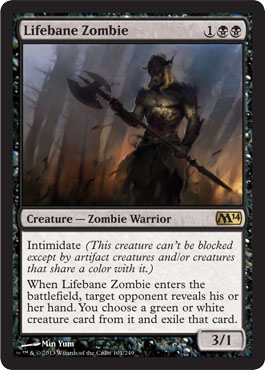By: Jason Waddell
80 days.
80 days until the Modern Grand Prix in my current city of residence, Antwerpen, Belgium. Although almost the entirety of my Magic time is spent on the cube format, lately I’ve had the constructed itch. I haven’t played constructed in any real capacity since the Stoneforge Mystic banning, but have had my eye on Magic’s non-rotating formats for some time.
As previously discussed, my favorite archetype is UWR Tempo with a heavy serving of burn. Fortunately, UWR decks sit firmly in the top tier of Modern’s metagame. Last weekend’s 2013 Player’s Championship was taken by Shahar Shenhar, member of MTGmadness.com, Riptide Lab’s site sponsor. He defeated Reid Duke’s Hexproof deck in the finals with the following:

The UWR decks, despite using a relatively stable list of format staples, is exceptionally customizable, and Shenhar’s list is perhaps the most middle-of-the-road in terms of tempo. Prior to the Player’s Championship, the most common UWR decks in the online metagame followed the mold of Brandon Nelson’s GP Kansas City Top 8 deck.
My personal tastes tend towards the aggressive, and I am quite fond of the more aggressive version that maxes out on burn spells and Geist of Saint Traft.
Although this list did win a pair of back-to-back online PTQs in January, the Geists appear to have fallen out of favor in the current metagame.
I’m not sure where my deck will land on the aggression spectrum, but look forward to the testing process and the opportunity to attend my first Grand Prix. Congratulations once again to Shahar Shenhar on his Player’s Championship victory, and for pushing my favorite archetype one step further.
Discuss this article in our forums.





